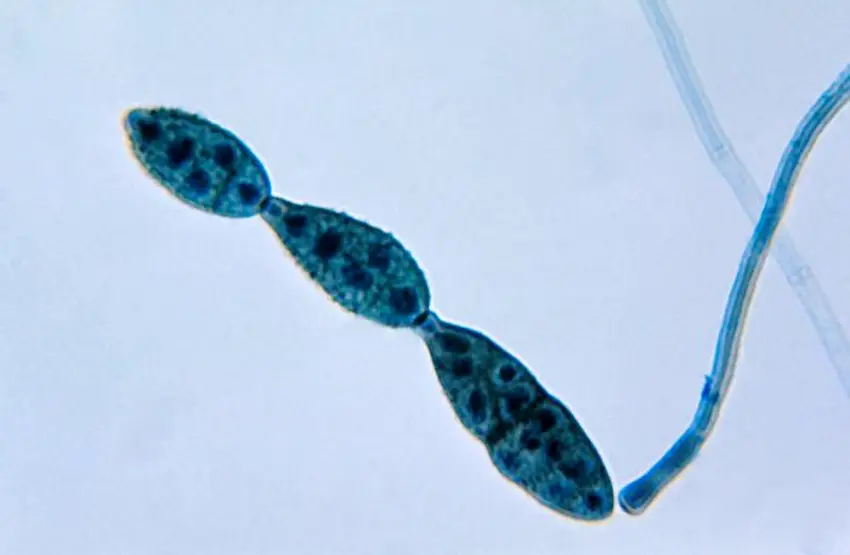Contents
CLASSIFICATION OF ALTERNARIA
Kingdom :- Mycota
Division :- Eumycota
Sub-division :- Deuteromycotina
Class :- Hyphomycetes
Order :- Moniliales
Family :- Dematiaceae
Genus :- Alternaria
Various species of Alternaria can be collected on hosts mentioned above. A. solani can be gathered from potato fields, three or four weeks after the crop is sown.
STUDY OF HOST, DISEASES AND SYMPTOMS
Majority of the species are weak parasites but some are saprophytes also. Species of Alternaria parasitize plants as well as animals.
- Of all the species, A. solani is economically very important, as it attacks potato plant (Solanum tuberosum; vern. alu; fam. Solanaceae) and causes early blight of potato. In Indian plains, early blight is more destructive than late blight.
- brassicae and A. brassicicola cause grey and dark leaf spots of Brassica spp. (fam. Cruciferae).
- bumsi parasitizes cumin (Cuminum cyminum; vern. jeera; fam. Umbelliferae).
- triticina causes leaf blight of wheat (Triticum spp.; vern. gehun; fam. Graminae).
- alterata (=A. tenuis) infects sunflower (Helianthus annuus; fam. Composittae or Asteraceae) and large number of other hosts causing Leaf spot disease.
- Conidia of A. tenuis also cause ‘alternariasis’ in guinea pig. Generally the blight develops at the margins of the leaves but the whole leaf can get infected. The preliminary symptoms appear in the form of small, isolated and pale brown spots. As the spots grow, they become black, irregularly circular and show a series of concentric rings which produce a ‘taget board’ effect.
- Other species which infect various hosts include
- lini-Alternaria blight of linseed (Linum usitatissimum; vern. alsi).
- carthami-Alternaria disease of safflower (Carthamus tinctorius; vern. kusum).
- palandui-blight of garlic (Allium sativa; vern. pyazi).
VEGETATIVE STRUCTURE
- Mycelium is intercellular or sometimes intracellular and yellowish brown in colour.
- Hyphae are multicellular and branched.
- Hyphae are also septate. Each cell is uninucleate.
STUDY OF CONIDIA
- The conidia also are usually yellowish brown in colour.
- The conidia may either be single or in chains. These are borne on conidiospores which are not much distinguishable from the vegetative hyphae emerging through stomata.
- They are long, dark coloured, muriform (beaked), multicellular and dictyosporous i.e. spindle shaped or ovoid with both transverse and longitudinal septa.
- The perfect stage of this form genus wherever known belongs of Loculoascomycetes- genus Pleospora.
IDENTIFICATION
- KINGDOM – Mycota
- Chlorophyll absent
- Reserve food glycogen
- Cell wall of fungal cellulose.
- DIVISION – Eumycota
- A definite cell wall present.
- SUB-DIVISION:- Deuteromycotina
- Perfect stage absent, reproduction by asexual means only
- CLASS :- Hyphomycetes
- Mycelium sterile or bearing spores directly or on special branches.
- Not aggregated in pycnidia or acervuli
- ORDER – Moniliales
- Conidia borne on free condidiospores.
- FAMILY – Dematiaceae
- The mycelium, conidiospore and usually the conidia are brown or black in colour.
- GENUS – Alternaria
- Conidiospores distinct, mostly erect.
- Conidia dictyosporous.


Leave a Reply